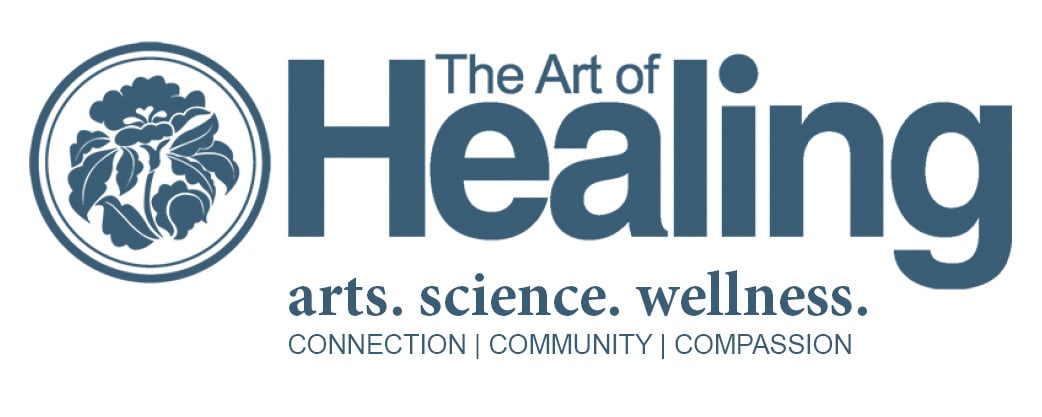By Carolanne Wright
We’ve all been touched by death in one form or another — whether through a beloved animal, the rhythm of nature or someone close and dear to us. As commonplace as the cycle of life and death is, those in the West tend to have an aversion to the reality of this most natural of transitions. We try our best to evade the aging process and glorify youth — while ignoring the elderly and dying. Many times, we are completely numb to our emotional terrain or become overwhelmed when faced with death.
Navigating Death: Cultural Contrasts
On my first trip to India, one of the most striking aspects of the country was its relationship to death. It wasn’t something that was hidden — instead, death was everywhere. Animals and people were dying in the streets, I saw disease and disfigurement and the burning ghats. For a heavily indoctrinated Western mind, these scenes were shockingly uncomfortable. And yet, I couldn’t turn away. For all the death and decay, there were also incredible moments of heart-wrenching beauty. Carefully shrouded bodies layered with flowers and lovingly carried through the streets by family members to the burning ghats on the Ganges River. The holy men presiding over the event, small woven baskets of banana leaves filled with marigolds and lit candles floating down the river at dusk, all as tributes for those who have departed. One is surrounded by death, but also extraordinary sacredness and meaning.
The experience in India was vastly different from when my young son died years later in the United States. Here, we experienced the ‘business’ of dying — industrial, scheduled and meaningless. Thankfully, Liam’s father and I were able to see clearly enough through our grief to demand certain elements outside ‘the norm’ — specific Tibetan Buddhist prayers and mandala’s placed with the body before cremation, and a white blooming Japanese lilac tree planted on my father’s property, which is rooted with Liam’s ashes.
But how often do we truly connect with death in a sincere manner? Without being shuttled through the corporate funeral process, one which has a significant negative impact on the environment. Is there a better way in the West? The answer is a resounding yes.
Conscious Living and Dying
Doorway Into Light was founded by Reverend Bodhi Be, Leila Be and Ram Dass (Dr. Richard Alpert) on the Hawaiian island of Maui as an advocacy and educational organisation focused on death and dying. By actively assisting the dying, their families and caregivers, the organisation transforms the ‘business of dying’ into one of ‘sacred service.’ Grief counselling and community outreach are also important elements of their work. Additionally, options are available for end-of-life care and after-death care that are ‘holistic, environmentally sustainable, community and famil- based, and spiritually inclusive.’
One method for maintaining ecological balance in relation to burials is through natural preserves. According to the Doorway Into Light website:
“Today’s American cemetery contains massive amounts of hardwood, metal and concrete coffins, many covered with plastic or concrete grave liners to keep the ground from sinking when the body and coffin decompose, thereby ensuring easy lawn mowing. Large amounts of toxic embalming fluids containing formaldehyde, a cancer causing chemical, are leaking from coffins and seeping into the ground. Pesticides and herbicides are commonly used further poisoning the ground and potentially leaching into the groundwater. Gravestones and markers fill the space. Current cemeteries are now reduced to ‘one-use forever’ as well as removed from the public commons. The body and coffin are buried ‘6 feet under’ where few microorganisms live, so decomposition is a long process. Cremation is becoming more popular as people recognise that present day cemeteries are a costly and poor use of land.”
The organisation envisions a green/conservation cemetery utilising native trees to help reforest a section of Maui, with deceased bodies and ash increasing soil fertility. Walking trails, a picnic area and a meditative, reflective zone with small markers indicating the names of the dead in each particular grove, will be included in the site. To encourage decomposition, the bodies will be buried two to three feet deep. “Our vision is to combine a burial ground with a reforestation project, a park, open space and greenways which include conservation easements, ensuring a multi-use zone protected for the public commons in perpetuity.”
A Gift to the Planet
Lastly, A Will For the Woods gives a moving account of one man’s journey to create his final resting place in an ecologically sound manner. Battling lymphoma, Clark Wang and his partner Jane courageously face his impending death, while also preparing for a spiritually meaningful funeral. A must-see for anyone concerned about the environment and leaving a legacy in harmony with the timeless cycles of nature.





